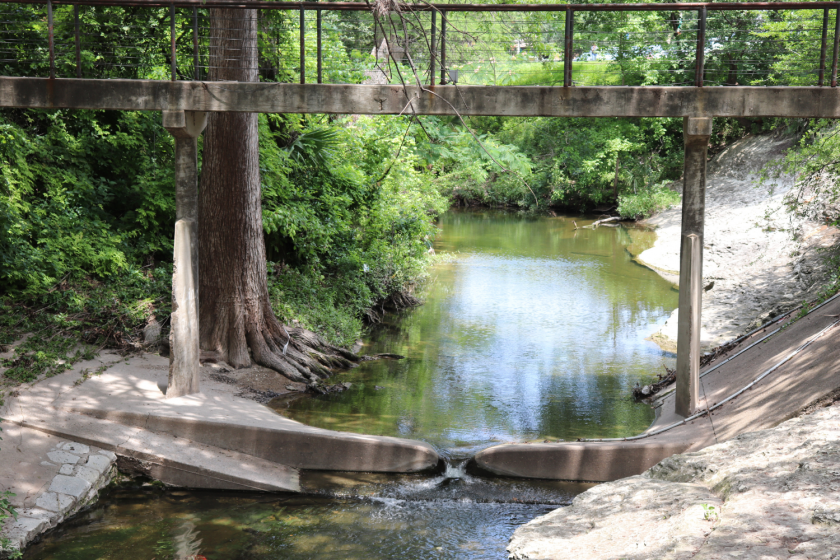The Upside to Leaky Pipes: Happy Trees
December 8, 2024

Astute observers of Waller Creek on UT campus may have noticed that it never runs dry. There’s a good reason for that. A significant portion of the water in it — anywhere from 25% to 50% — can be traced back to wastewater from leaky municipal pipes.
But there’s a silver lining to the less-than-perfect plumbing, according to research from the Department of Earth and Planetary Sciences. The water flowing through the creek sustains trees growing along it, allowing them to thrive during drought conditions that take a toll on trees growing along streams in more rural areas.
The research involved taking small cores from bald cypress trees along Waller Creek and Onion Creek, a rural stream about 12 miles from the UT campus. The cores contained the growth record of the trees, which the researchers then compared with the drought record of the region.
They found that even during the state’s most severe drought on record, which spanned from 1950 to 1957, the Waller Creek trees showed only a small decline in growth. In contrast, the trees of Onion Creek faced a steep decline.
Leaky pipes are hardly unique to Austin. That means that around the world, there are probably pockets of trees tapping into wastewater, said Jay Banner, a professor in the department who led the study. Understanding the extent of infrastructure leakage and its ecological influence can help policy makers understand the broader effects of urbanization — the good and the bad — and plan accordingly.
The findings were published in the Nature Partner Journal Urban Sustainability.
Back to the Newsletter